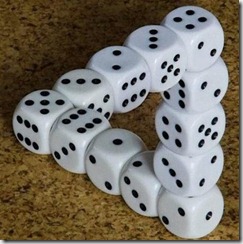Why did WoW succeed and how do other MMOs manage to fail when Blizzard has seemingly laid the path to 14 million users bare for all to see?
Look no further than community dynamics in both society and, by extension, in MMOs: you’ll see that Blizzard’s success is not a blueprint for future success, but instead a monumental step forward that can only happen once—this step forward has unalterably changed the community dynamics of MMOs by willingly including an unprecedented number of new people into the MMO gaming.
The Community: Exclusion Builds and Inclusion Destroys
[This is an introduction to community dynamics in real life. If you wish to skip this section, you can do so without missing out on anything particularly necessary, though I encourage you to read this because it may help you to understand some very important patterns in real communities.]
Without some way of effectively figuring out who you can trust, you can’t get anything substantial done aside from watching and guarding your own interests closely. We more efficiently pick who we trust through membership in social institutions, communities. We establish social institutions as a way of formalizing rules for who we can and cannot trust. If someone is in my community, it means that people (who I trust) trust that person, therefore that person is worthy of my trust. Instead of spending the significant amount of time required to personally establish a trust-bond in my relationship with a stranger, I can see that they are a part of my community, even though I don’t know them directly, and immediately begin working with them—I can safely assume a base level of trust. My trust in this stranger probably won’t be violated, because we’re both a part of this community and we both want to remain parts of this community.
Members in a community want their community to be exclusionary—people who they should not trust should not be a part; most people are not trustworthy. Members of a community know of their membership because they can tell that other people are not in the community. Strongly identifying who is not in your community gives you an identity through leaving out others. As the community grows to a sufficient size, members want membership to be more difficult to attain, more exclusive, more exclusionary; if a community is easy to join then there’s little meaning to membership. A loose community does a worse job of guaranteeing a base level of trust between its members. If a community member is not in a position of power, and therefore de facto superior, they want only people that they view as their equals or betters (i.e. people who are above-average in everything like they think they are) to be a part of their group, so they invent or improvise initiation procedures to reduce the chances of unworthy outsiders joining their clique. Rites of initiation are primarily barriers to make sure that new community members are serious about being a part of the community. Initiation raises the cost in leaving a community, because to join a new community an outcast would have to overcome initiation obstacles again instead of being productive and progressing. This higher cost of leaving incentivizes community members to continue being trustworthy.
When too many people join the clique (when the population exceeds the Dunbar’s Number for humans), it segments into several smaller communities. Each of these communities is exclusive, while the over-extended clique which birthed the smaller communities appears to be inclusive.
Community-through-Play to Community-from-Play
You used to play games with people because you knew them. Your friendship extended into playing the game, whether the game involved cooperation or competition, direct or indirect. Either way, you rarely met someone while you were playing the game unless you were in an arcade—though arcades fell out of mainstream gaming well before the gaming scene picked up mainstream appeal in the 1990s.
Think back on board games that have existed since well before the advent of the videogame. Board games were an activity used to further socialize with people you knew. They were a gathering place where already-established relationships could be molded and strengthened (or tested, in many cases).
MMOs work in reverse. They start you on wobbly legs in an unknown universe that includes thousand of people with whom you have no relationship. An oft-overlooked though crucial process in an MMO: How a new player goes from being excluded by all and unskilled to being a functioning member of a community. How do players form bonds with other players?
If the game is exclusionary by its nature, like a current-gen sandbox PvP game, the community is against the player from the outset. The new player is weak and everyone else is a potential wolf. The new player cannot be trusted, because he could be a spy, a saboteur—or maybe he’s a useless scrub and if we outfitted him we’d just be wasting our money.
But if the new player survives this hazing and becomes initiated into the group, the bond is tighter because the group actively excludes and identifies itself through that exclusion.
World of Warcraft is the opposite.
From Exclusion to Inclusion: Game Design
In the past, games brought together people with similar interests—namely, playing games. The clique of gamers was tight-nit and exclusionary. If two gamers met and could identify one another as part of the group, they would immediately have a strong rapport. Gamers looked down at non-gamers as people who “just don’t get it”.
Games were designed for gamers. They became more complex and more difficult as players and game designers learned and explored more games. In this way, games became increasingly exclusive to those who could play them, and, by extension, those who had played earlier games.
To make games into a business on a wide scale, corporations had to sell games to people who had not played games before. Console gaming’s success over the past thirties has opened the floodgates—now console gaming is mainstream. A community that used to be exclusionary is now forced to be inclusionary. Being a gamer is more nebulous than it even has been.
Blizzard’s Open Gates
We should not be surprised that Blizzard took an exclusionary and elitist MMO design paradigm and tried to make it inclusionary by removing skill tests, requiring less time, and assuming little-to-no player cooperation. Inclusive game design opens the game to millions of players who otherwise wouldn’t have the time or interest to pay for the game. Just let people play the game easily and encourage them to keep playing, and you’ll find that you’re suddenly making much more money.
But this move costs World of Warcraft in community coherency and quality. And community is a surprisingly strong factor in why people keep playing MMOs—it means more to many players than the game mechanics themselves. By trying to include as many people in the game’s community as possible, Blizzard fractured the game’s community and made it meaningless to be a part of the WoW community, so the broader community of WoW is a dead space full of genuine trolls and normal people turned into adversarial jerks by the community-less nature of the game.
(See also Elder Game’s article, “Community Friendliness: Size Matters”.)
Letting just about anyone play WoW was a conscious decision by Blizzard: they traded community quality for profit potential. They were the first to do it and they thrive for this reason. WoW succeeds because the game design is inclusionary and people actually showed up to play. Why did they show up? Because the other games in the market had their gates closed to all but those who knew a closely-guarded password, while WoW had theirs open to anyone who happened to wander by.
If people don’t show up to play an inclusionary game and stay, the benefit of being inclusionary evaporates. Left in the ruins are a weak community and a mediocre-at-best game.
MMO Design as Community Design
An MMO designer is a community designer. She designs an ecosystem where communities subsist, merge, diverge, devolve, and re-emerge. The MMO should be first considered as a place where communities live, and secondarily as a game. This doesn’t mean the game should be second-rate and tacked-on as it is in Second Life—I mean that MMOs should function well as community environments just as they should function well as games. When working out the basic mechanics—how the world works—designers should consider that this is a world where players should want their characters to live. The possible effects a player can have on the world should be designed with their community-wide effects in mind, not just their effects on one player.
The central question in game design, “would this be fun?”, should be augmented in MMO design with “would this contribute to the creation and maintenance of communities?”
World of Warcraft is the only MMO that can succeed on such an enormous scale by simply opening its gates to all comers. The next significant step forward in MMO design will be taken by the designers who put the community first in their minds and let the design flow from there. The pre-pubescent viral facebook games are only the first baby steps of this new design pattern in MMOs.





